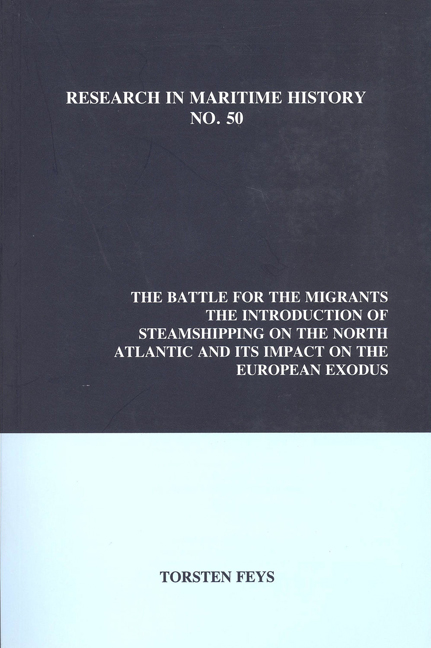 The Battle for the Migrants
The Battle for the Migrants from Part II - The Impact of Steam Shipping on Transatlantic Migration, 1870-1914
Approaching nineteenth-century transatlantic mass migration as a trade issue adds to our understanding about the business structures that sustained chainmigration patterns, the structural development of passenger lines into cartels turning migrant transport into a big business and the origins, development and enforcement of early migration laws. Placing the steamship companies at the heart of the European mass migration story underlines their pivotal role in enabling, facilitating and stimulating the process.
Transatlantic business networks were entangled in the transnational chain-migration networks through which a majority of migrants moved. Migrant agents and brokers represent key “meso” level figures connecting both. The focus on the American market underlines the importance of established immigrant entrepreneurs in ethnic enclaves within this process. Sharing the same background put them in a privileged position to gain the trust of coethnics who depended on them for key services to fulfil their migration strategies. Bringing people from Europe formed part of these. Through prepaid tickets the agent connected the purchaser with the shipping company and local agents in Europe. Together they arranged inland transport to the port of embarkation and supplied the passenger with information on how to overcome barriers along the way. At these barriers and key transit points, other agents provided assistance to ensure that passengers arrived for their scheduled sailing. Besides assisting with the move, migrant agents played an important role as distributors of information on opportunities in the US, on ways to reach and finance the trip to various destinations, on laws regulating the passage and how to circumvent them and on conditions in the home country to stimulate sales in the US. They promoted ocean passage sales directly with continual advertisements in the popular press on both sides of the Atlantic at their own cost. Often migrant agents published their own newspaper whose subscriber lists served to extend their customer base. Lists of potential clients were used to send letters containing promotional material and to direct canvassers and peddlers. Personal contacts and forms of direct marketing were fundamental to gain the confidence of customers.
It was not so much the prospect of financial gains on ticket sales but rather the crucial importance of this migrant service to develop and attract other business opportunities that made this product attractive to migrant entrepreneurs in the US.
To save this book to your Kindle, first ensure [email protected] is added to your Approved Personal Document E-mail List under your Personal Document Settings on the Manage Your Content and Devices page of your Amazon account. Then enter the ‘name’ part of your Kindle email address below. Find out more about saving to your Kindle.
Note you can select to save to either the @free.kindle.com or @kindle.com variations. ‘@free.kindle.com’ emails are free but can only be saved to your device when it is connected to wi-fi. ‘@kindle.com’ emails can be delivered even when you are not connected to wi-fi, but note that service fees apply.
Find out more about the Kindle Personal Document Service.
To save content items to your account, please confirm that you agree to abide by our usage policies. If this is the first time you use this feature, you will be asked to authorise Cambridge Core to connect with your account. Find out more about saving content to Dropbox.
To save content items to your account, please confirm that you agree to abide by our usage policies. If this is the first time you use this feature, you will be asked to authorise Cambridge Core to connect with your account. Find out more about saving content to Google Drive.